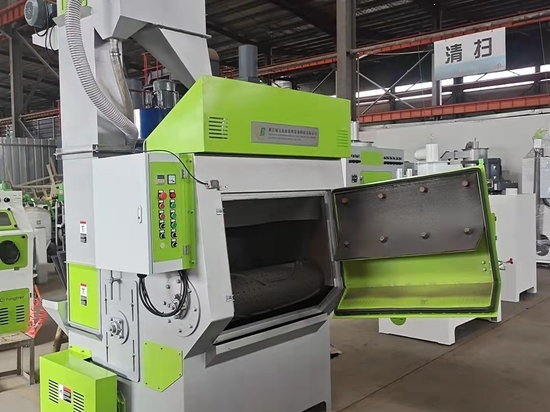
#Industry News
What are the applications of“Full of Texture”sandblasting?
Manual and automatic sand blasting
Many metal parts in daily life are not with a mirror surface, but a little rough dull polish, which is preferred by many people. This is processed with a normal surface treatment for metal products called sand blasting. Sandblasting is the operation of forcibly propelling a stream of abrasive material against a surface under high pressure to smooth a rough surface, roughen a smooth surface, shape a surface or remove surface contaminants, which is widely used in many industrial fields.
Because of the unique process characteristics, sandblasting has won the favor of most industries, and what are the main applications of sandblasting?
1. Improve the performance of mechanical parts
After sandblasting process, in addition to the 0.5-1 improve of surface smoothness, it creates microscopic uniform pits in the surface which maintains the storage of lubricating oil and improves the lubrication conditions, thus to prolong the working life of the parts and reduce the noise when machine is running. Such as gear, crankshaft, textile machinery, sewing machinery etc...
2. Make preparation for surface treatment
If parts are pretreated by sandblasting before electroplating, plating adhesion will be stronger, especially for hard chrome. Such as chrome plated of engine piston ring, chrome-plated spinning frame roller etc... Paint parts, spray parts, if do sandblasting preparation, can enhance coating adhesion; Bonding parts, if do sandblasting preparation, can make better and stronger bonding quality.
3. Sandblasting removing the dirty surface
Various metal workpieces after heat treatment are accompanied by oxide scale, residual salt, stains, etc. The sandblasting process can not only remove these substances, but also improve the surface finish of the parts, especially prominent for complex molds and precision parts.
4. Cleaning burrs of machined workpieces
Even small burrs will cause great harm. With the development of science and technology, the mechanical parts are becoming more and more complex, and the precision requirements are getting higher and higher, the application conditions are more and more strict, even small burrs are not allowed.
5. Cleaning the rough surface of precision castings
The blasting process can clean the scale and residue on the surface of precision castings, and at the same time can play a role in improving the surface finish of the castings. Such as Aero-engine turbine blades, Surgical Instruments, Jewelry etc... It also makes the part more beautiful by exposing the casting parts to a uniform metallic color. Such as various instrument shells, frames etc...
6. Removing dirt and rust
Various molds, such as forging die, stamping die, rubber mold, tire mold, plastic stamper, glass mold etc..., they will inevitably be contaminated with release agent and burn marks after a period of using, and sandblasting is perfect for cleaning such kind of problems and simultaneously increase the working life of the molds.
7. Surface decoration by sandblasting
Sandblasting is an effective way if the parts requires a smooth finish but without reflection, for example surgical instruments etc... Sandblasting process is also widely used in making frosted glassware and decorative patterns, processing instrument panels and plush of special fabrics.
8. Finishing processing by sandblasting
As a method of finish processing, sandblasting does excellent in this field, especially for complex shaped parts, e.g. polishing of various mold surfaces of the impeller engine blades (monetary mould, fragrant coins, commemorative coin molds), is incomparable to any other method.
As sandblasting has so many advantages in surface treatment, it is widely used in various fields, with the upsizing of parts and mould, sandblasting technology also tends to develop in the direction of larger scale.




